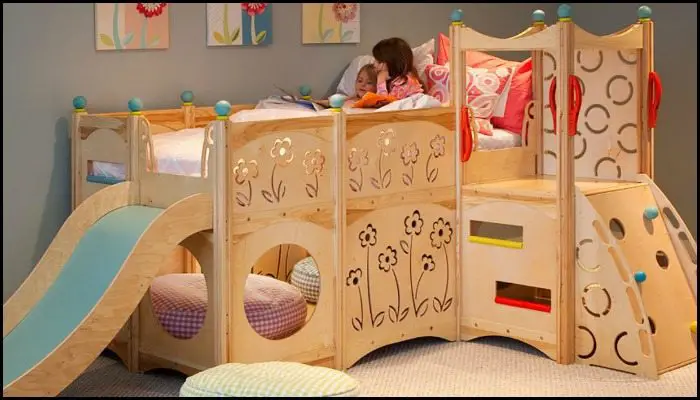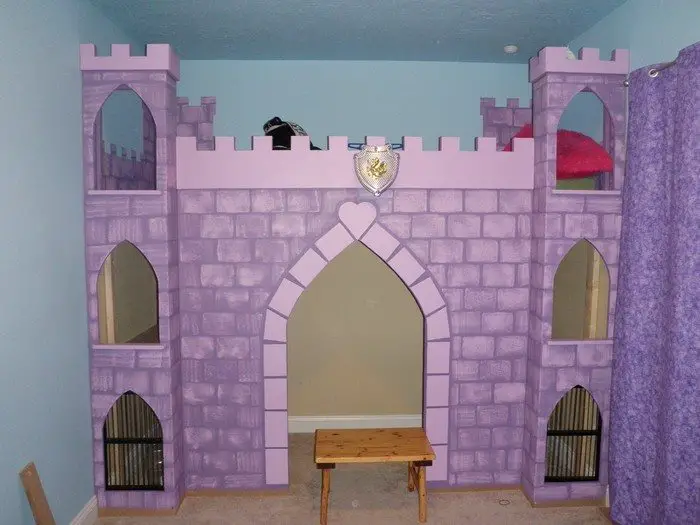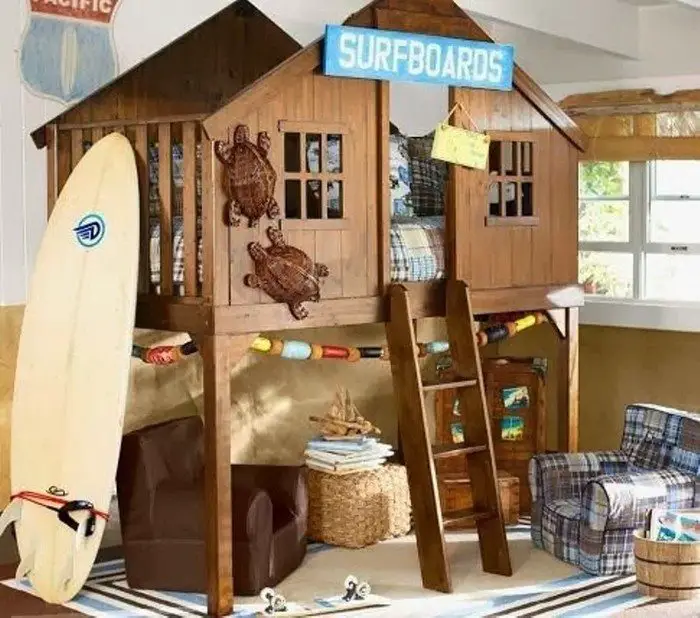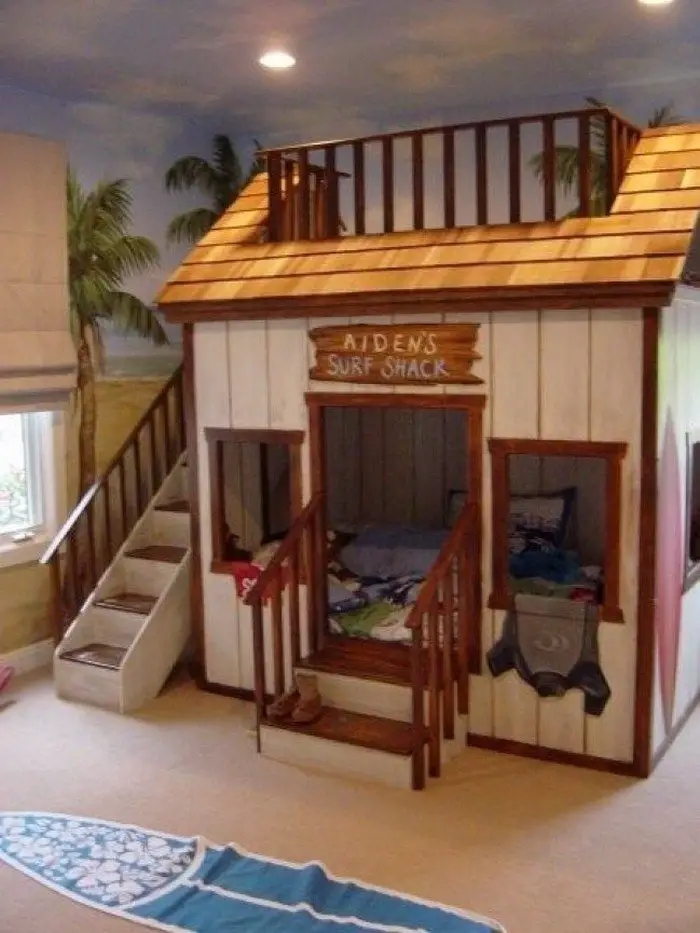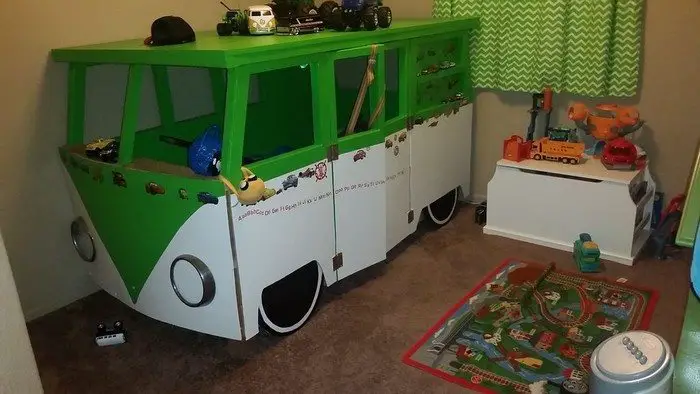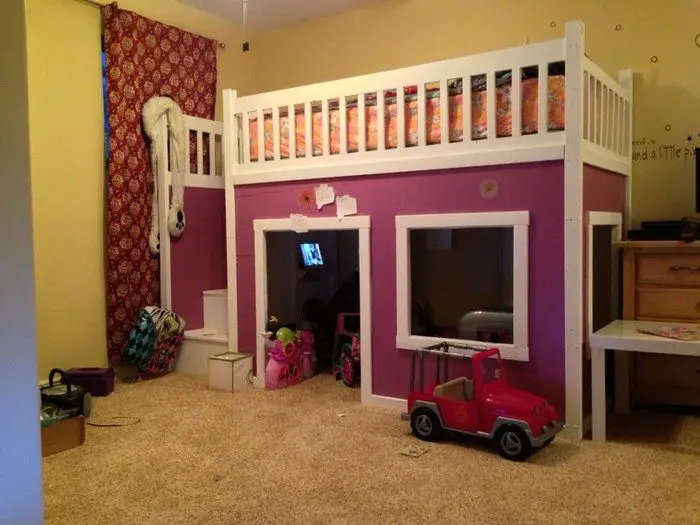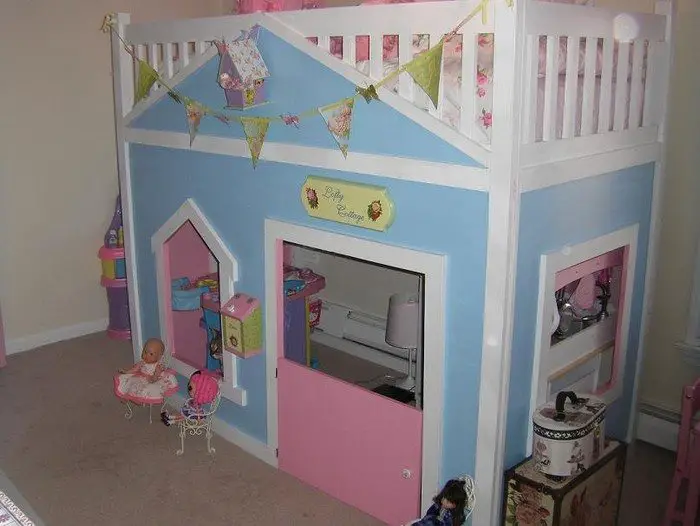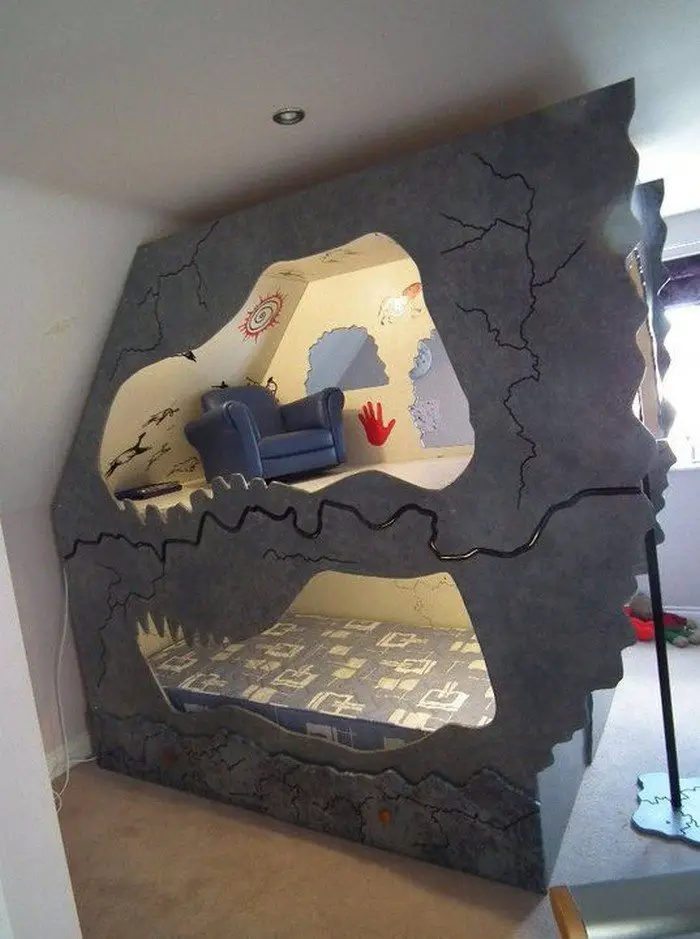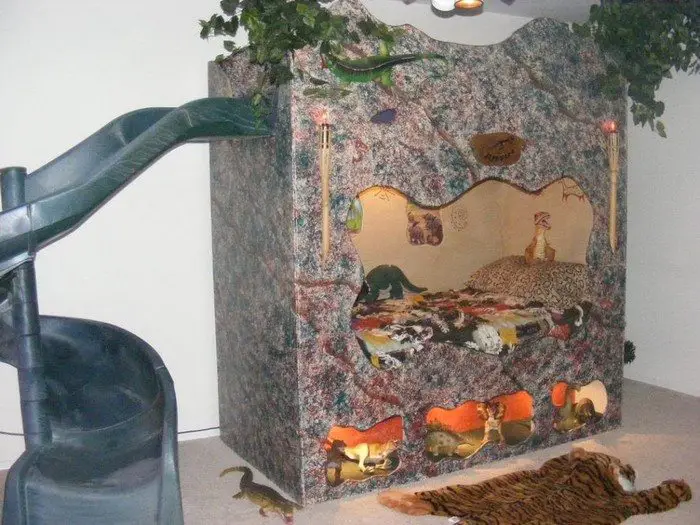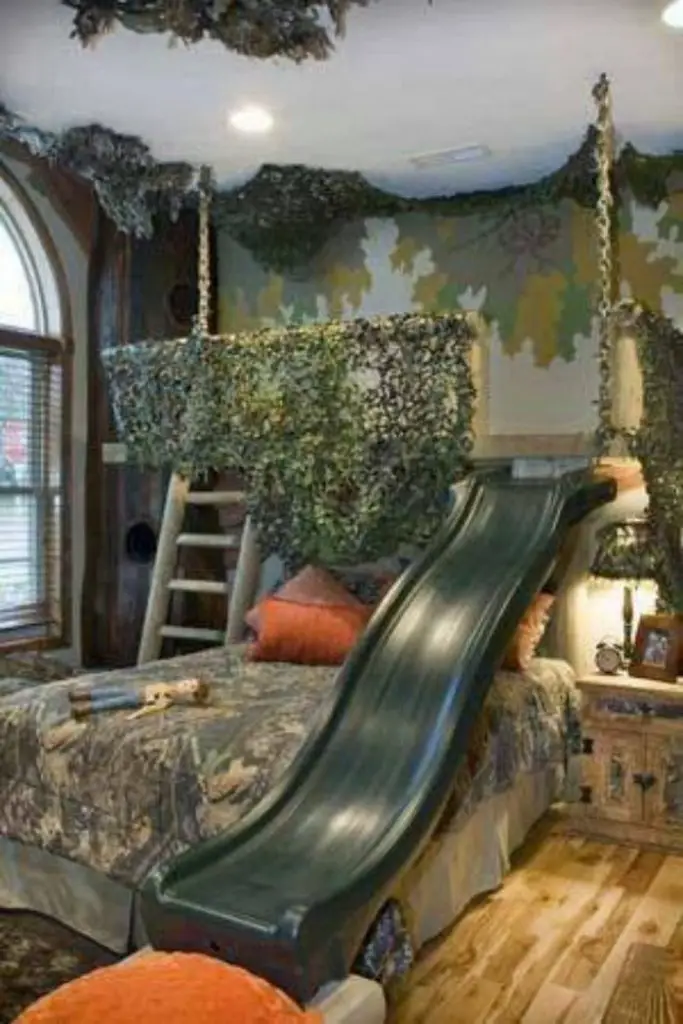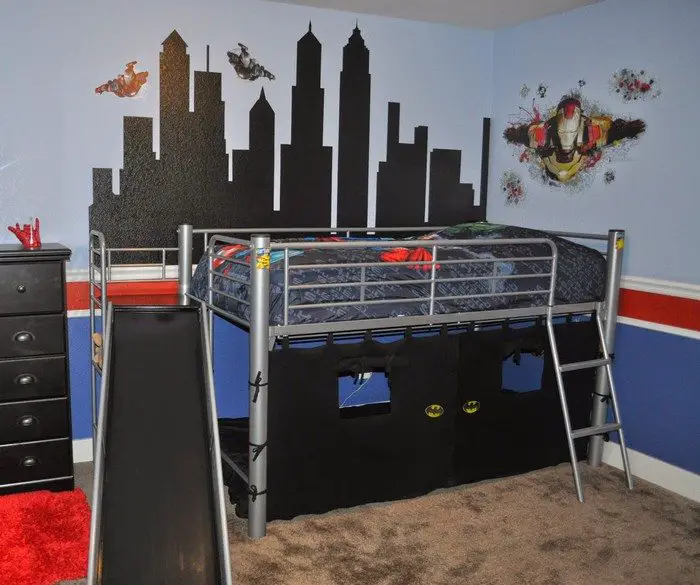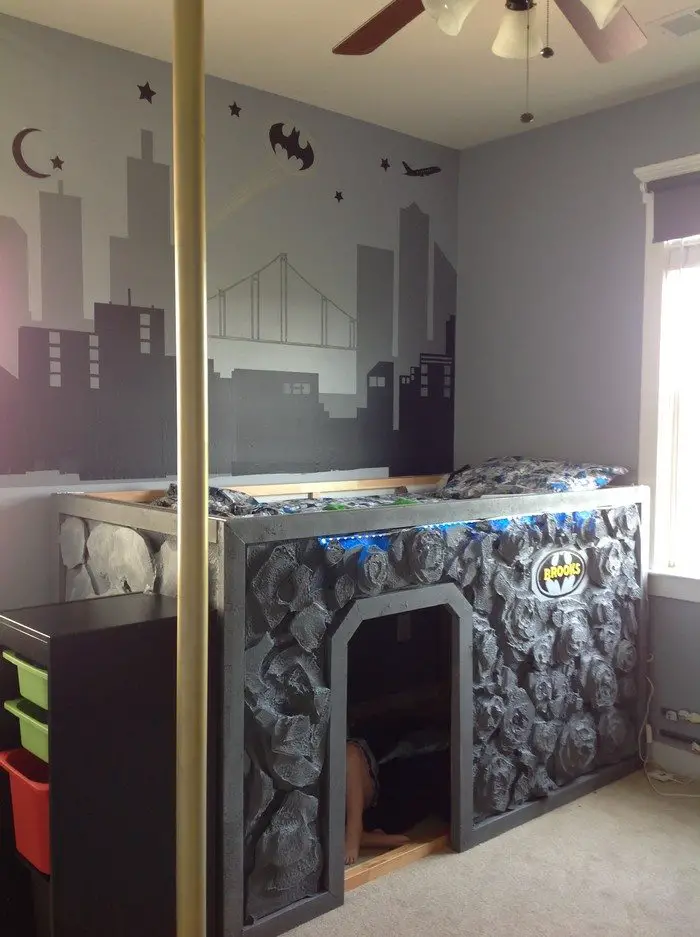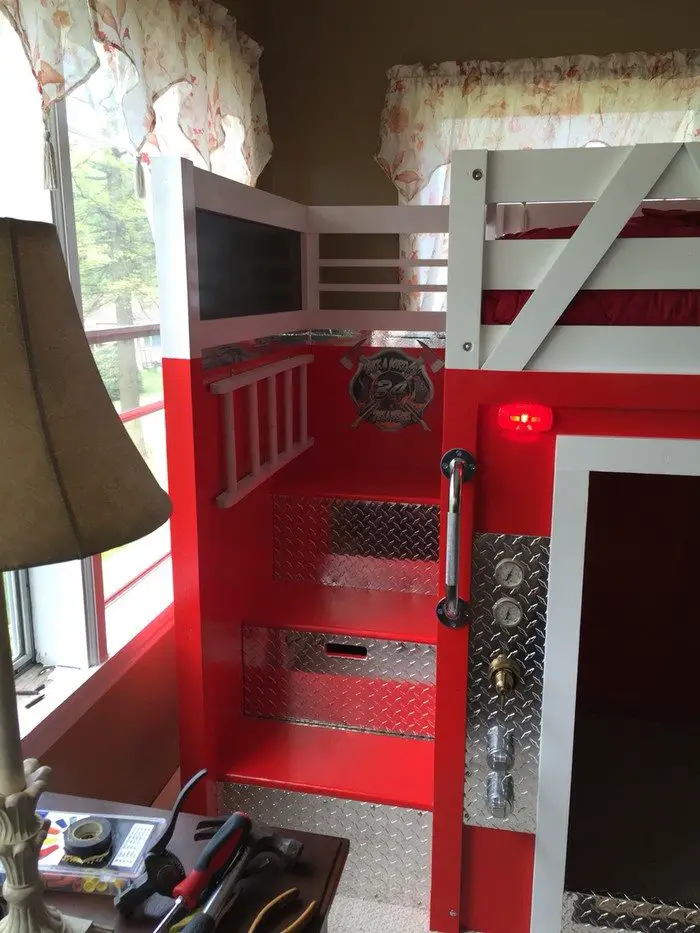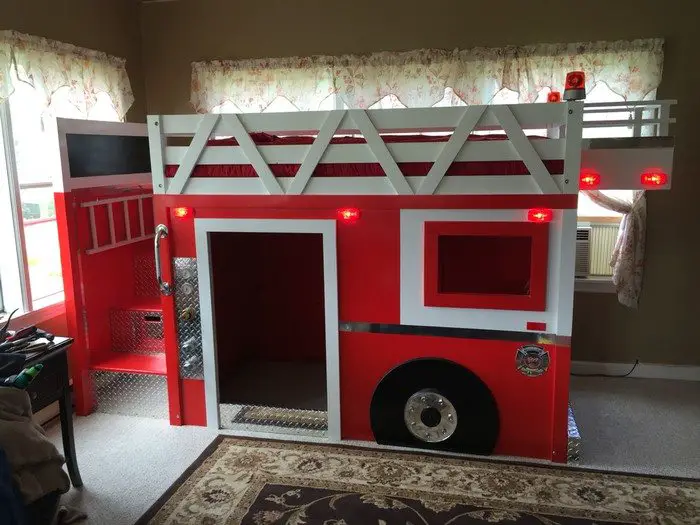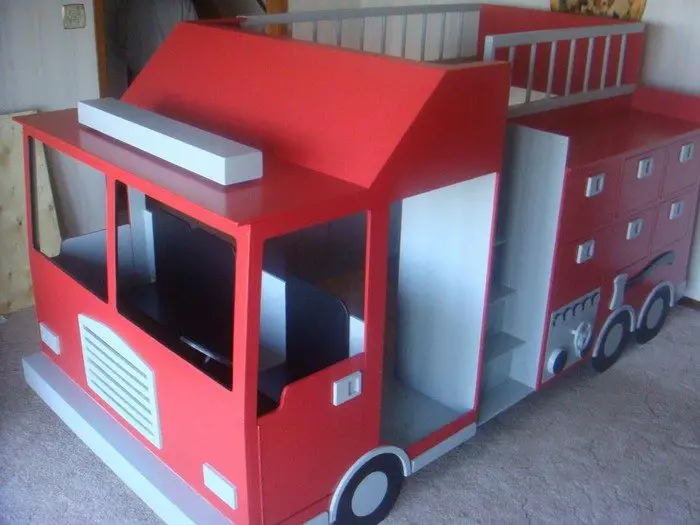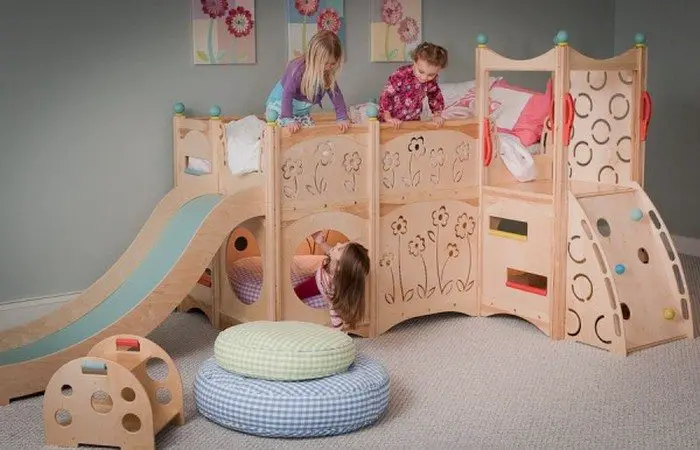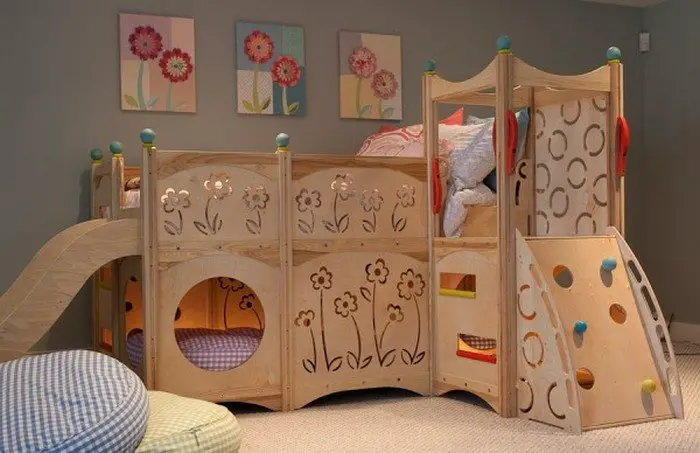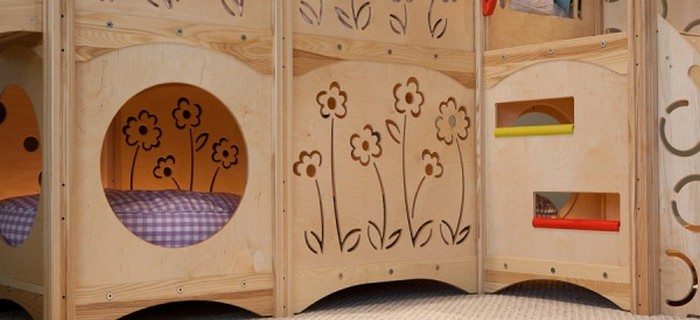Play ‘plays’ an important part in every child’s well-being. Kids learn a lot through play so parents must support this kind of activity in every way possible. And one fun way is to build them a playbed!
A playbed offers a unique and imaginative space where children can immerse themselves in endless adventures, transforming ordinary bedtime routines into extraordinary journeys of exploration and discovery.

While playing outdoors is encouraged, the weather does not always cooperate with our plans. This kids’ bed idea serves as a great alternative for when outdoor play is not possible. The kids can play anytime they want, and parents won’t have to worry about their safety.
It is also a clever solution for providing a play area when space is a concern in your house! Since it is a 2-in-1 piece of furniture, space is saved and used efficiently. And when you DIY, you can adjust measurements so that it fits perfectly in your kid’s bedroom!
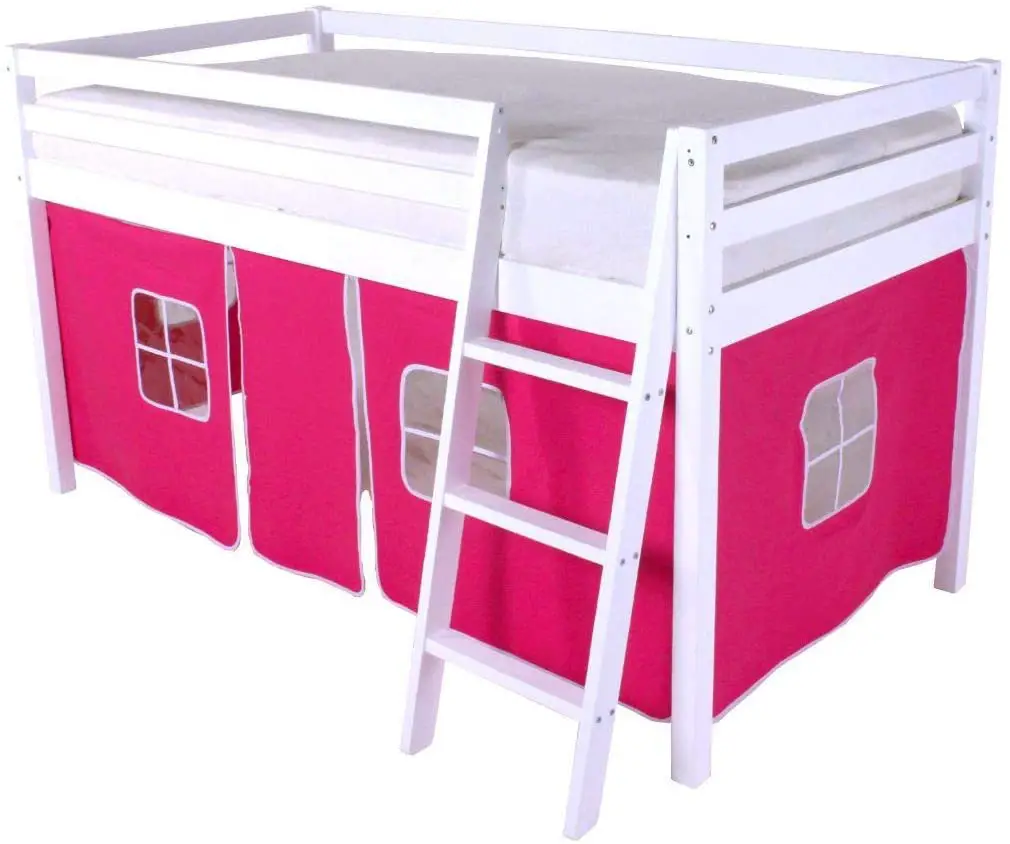
Do your kids need a playbed? Have a look at these eight awesome ideas and be inspired to design and build a unique one for them. :)
Click on any image to start the lightbox display. Use your Esc key to close the lightbox ![]()
Contents
Crafting Wonder: Customizing Ideas for Playbeds
In the heart of every child’s bedroom lies a magical space where dreams take flight, adventures unfold, and imagination knows no bounds – the playbed. Customizing playbeds offers a canvas for creativity, allowing parents to transform ordinary sleeping spaces into extraordinary realms of wonder and excitement.
From enchanted castles to futuristic space stations, the possibilities for customization are endless. In this guide, we’ll explore a plethora of ideas for customizing playbeds, providing inspiration and practical tips to help you create personalized havens that capture your child’s imagination and make bedtime an adventure.
Themed Designs
1. Fairy Tale Castle: Transform your child’s bedroom into a fairy tale kingdom with a castle-themed playbed. Add turrets, drawbridges, and secret passages for an enchanting touch.
2. Space Adventure: Blast off on a cosmic journey with a space-themed playbed. Incorporate rocket ships, planets, and stars for an out-of-this-world experience.
3. Jungle Safari: Embark on a wild safari adventure with a jungle-themed playbed. Add plush animals, jungle foliage, and safari prints for an immersive experience.
4. Underwater Wonderland: Dive into the depths of the ocean with an underwater-themed playbed. Use shades of blue and green, along with sea creatures and coral reefs, to create an underwater paradise.
5. Pirate Ship: Set sail on the high seas with a pirate ship playbed. Add sails, cannons, and treasure chests for a swashbuckling adventure.
Built-in Features
1. Slide: Add a slide to your playbed for a fun and exciting way to start the day.
2. Climbing Wall: Incorporate a climbing wall for an adventurous way to reach the top bunk.
3. Secret Hideaway: Create a secret hideaway underneath the playbed for cozy reading nooks or imaginative play spaces.
4. Storage Solutions: Maximize space with built-in storage drawers, shelves, or cubbies for toys, books, and clothes.
5. Study Area: Include a built-in desk or study area for homework, art projects, and creative endeavours.
Personalization
1. Custom Bedding: Personalize bedding with your child’s name, initials, or favourite colours and patterns.
2. Monogrammed Pillows: Add monogrammed pillows for a personalized touch.
3. Wall Decals: Use removable wall decals to customize the playbed with your child’s favourite characters, animals, or motifs.
4. DIY Projects: Get creative with DIY projects such as painting murals, sewing curtains, or building canopy tents.
5. Name Sign: Hang a personalized name sign above the playbed for a special touch.
Interactive Elements
1. Puppet Theater: Create a puppet theatre underneath the playbed for imaginative storytelling and puppet shows.
2. Art Station: Set up an art station with easels, paint, and brushes for creative expression and art projects.
3. Reading Nook: Design a cozy reading nook with pillows, blankets, and shelves filled with books for quiet moments of relaxation and exploration.
4. Dress-up Area: Include a dress-up area with costumes, accessories, and a mirror for imaginative play and role-playing adventures.
5. Sensory Play: Incorporate sensory play elements such as sand tables, water tables, or sensory bins for hands-on exploration and discovery.
Practical Considerations
1. Safety: Ensure that all edges are rounded, corners are smooth, and fastenings are secure to prevent accidents or injuries.
2. Durability: Choose sturdy materials and finishes that can withstand the wear and tear of active play.
3. Comfort: Select soft bedding, plush pillows, and cozy blankets for a comfortable and inviting sleep space.
4. Space Optimization: Maximize space with multi-functional design elements such as loft beds, bunk beds, or raised platforms.
5. Age Appropriateness: Consider your child’s age and developmental stage when designing and customizing the playbed to ensure that it is safe and suitable for their needs.
Customizing playbeds offers a world of creative possibilities, allowing parents to design personalized havens that capture the imagination and make bedtime an adventure. Whether inspired by fairy tales, outer space, or jungle adventures, the key is to tap into your child’s interests and preferences to create a space that is uniquely theirs.
With themed designs, built-in features, personalization options, and interactive elements, the possibilities for customization are endless. By considering practical considerations such as safety, durability, and space optimization, you can create a play that not only sparks joy and creativity but also provides a cozy and inviting sleep space for your child.
So let your imagination run wild and embark on a journey of creativity and adventure as you customize your playbed and create a truly magical space.
Playbed Ideas That Would Inspire You
Playbed Safety: Ensuring a Secure and Fun Environment for Kids
In the world of childhood imagination, playbeds serve as magical spaces where dreams take flight and adventures unfold. From enchanted castles to space stations, these innovative sleeping structures provide not only a cozy place to rest but also a platform for endless hours of playtime fun.
However, ensuring the safety of playbeds is paramount to prevent accidents and injuries. In this comprehensive guide, we’ll delve into essential safety considerations and practical tips to create a secure and enjoyable environment for kids while they explore the wonders of their playbeds.
Understanding Safety Standards and Guidelines
Before diving into specific safety measures, it’s important to have a basic understanding of safety standards and guidelines for children’s furniture. Regulations may vary by region, but common safety standards include requirements for stability, structural integrity, and the absence of sharp edges or choking hazards.
Familiarize yourself with these standards and ensure that any playbeds you purchase or build meet or exceed them.
Structural Stability and Durability
One of the primary considerations for playbed safety is structural stability and durability. Ensure that the playbed is built with high-quality materials and sturdy construction techniques to withstand the rigours of active play.
Check for any signs of wear or damage regularly, such as loose fasteners or weakened joints, and make repairs promptly to maintain structural integrity.
Guardrails and Protective Barriers
Guardrails and protective barriers are essential features for elevated playbeds, such as bunk beds or loft beds, to prevent falls and accidents. Guardrails should be securely attached to the bed frame and extended along the entire length of the elevated surface.
Ensure that the spacing between guardrails is small enough to prevent children from slipping through but large enough to allow for adequate airflow and visibility.
Secure Ladders and Access Points
For playbeds with elevated platforms or multiple levels, such as bunk beds or loft beds, secure ladders or access points are necessary for safe entry and exit. Ensure that ladders are securely attached to the bed frame and have nonslip treads to prevent slips and falls.
Consider the design and placement of access points to minimize the risk of collisions with other furniture or obstacles in the room.
Fall Zone Protection
Incorporate fall zone protection measures around the playbed to cushion falls and reduce the risk of injury. Place thick rugs, foam mats, or carpeting around the perimeter of the playbed to provide a soft landing surface. Avoid placing hard or sharp-edged furniture near the playbed that could pose a hazard in the event of a fall.
Childproofing and Choking Hazards
Childproofing measures are essential to prevent accidents and injuries around playbeds. Remove or secure any small objects, loose hardware, or dangling cords that could pose choking hazards. Ensure that electrical outlets near the playbed are covered with safety caps, and secure any loose wires or cables to prevent tripping hazards.
Supervision and Education
While implementing safety measures is crucial, parental supervision and education are equally important aspects of playbed safety. Teach children how to use the playbed safely, including proper climbing techniques, rules for playing on or around the bed, and guidelines for sharing the space with siblings or friends.
Supervise children during playtime to ensure that they adhere to safety rules and intervene if necessary to prevent accidents or conflicts.
Regular Maintenance and Inspections
Regular maintenance and inspections are essential for ensuring the ongoing safety of playbeds. Conduct periodic checks for signs of wear, damage, or instability, such as loose fasteners, cracked wood, or weakened support beams.
Tighten any loose hardware, repair any damage promptly, and consider professional inspections for more extensive issues.
Communication with Children
Effective communication with children is key to fostering a culture of safety and responsibility around playbeds. Talk to children about the importance of following safety rules, respecting boundaries, and using the playbed responsibly. Encourage open dialogue about any safety concerns or questions they may have and address them promptly and honestly.
Ensuring the safety of playbeds for kids requires a comprehensive approach that addresses structural stability, fall prevention, childproofing, supervision, and maintenance. By following safety standards and guidelines, incorporating essential safety features, and promoting responsible behaviour and communication with children, parents can create a secure and enjoyable environment for kids to explore, play, and imagine in their playbeds.
With careful attention to safety considerations and proactive measures, playbeds can continue to be magical spaces where dreams come to life while prioritizing the well-being and security of children.
Wrapping It Up
In the world of childhood imagination, playbeds serve as portals to magical realms where adventure knows no bounds and dreams come to life. From enchanted castles to daring pirate ships, each playbed design offers a unique opportunity for children to explore, create, and imagine. However, amidst the excitement of play, ensuring safety remains paramount.
As we conclude our exploration of these eight awesome playbeds for kids, it’s essential to emphasize the importance of balancing creativity with practicality. While the allure of whimsical designs may capture the imagination, it’s crucial to prioritize structural stability, fall prevention, and childproofing measures to create a safe and secure environment.
By incorporating essential safety features such as guardrails, secure ladders, and fall zone protection, parents can provide children with a space where they can play and dream without worry. Additionally, regular maintenance, supervision, and open communication with children about safety rules and guidelines are essential aspects of fostering a culture of safety around playbeds.
Ultimately, these playbeds offer more than just a place to sleep or play – they serve as catalysts for creativity, imagination, and endless hours of fun. By combining imaginative designs with practical safety measures, parents can create environments where children can explore, learn, and grow while embracing the magic of childhood.
With careful attention to safety considerations and a touch of creativity, playbeds can continue to be cherished havens where memories are made and dreams are realized.
Frequently Asked Questions
1. What age range are playbeds suitable for?
The playbeds are generally suitable for children aged 3 and up. However, certain designs may have specific age recommendations based on their complexity and safety features.
For simpler designs, such as low-profile playhouses or themed beds with minimal elevation, the age recommendation may be more flexible. These designs typically offer ample space for imaginative play and can accommodate younger children under the supervision of adults.
However, for more intricate designs like bunk beds, loft beds, or playbeds with elaborate climbing structures, manufacturers may recommend a minimum age to ensure the safety of young occupants. These designs often involve elevated platforms, ladders, or other features that require coordination and spatial awareness beyond the capabilities of very young children.
2. Are playbeds safe for active play?
Yes, safety is a top priority for these playbeds. They are designed with features such as guardrails, sturdy construction, and rounded edges to ensure a safe environment for active play. However, parental supervision is always recommended, especially for younger children.
3. Can playbeds be customized to fit specific themes or preferences?
Absolutely! The playbeds can be customized to fit specific themes, preferences, and room layouts. Whether your child dreams of exploring outer space, sailing the high seas, or living in a fairy-tale castle, customization options are endless.
4. How much space do the playbeds require?
The space requirements vary depending on the design and size of the playbed. Loft beds and bunk beds typically require more vertical space, while other designs may have a larger footprint. It’s essential to measure the available space in the room carefully before selecting a playbed.
5. Are the playbeds easy to assemble?
Most playbeds come with assembly instructions and require basic tools for assembly. While some designs may be more complex than others, many playbeds can be assembled with the help of two adults within a few hours. It’s essential to follow the manufacturer’s instructions carefully to ensure proper assembly.
6. Can the playbeds accommodate multiple children?
Yes, many of these playbed designs are suitable for accommodating multiple children, making them ideal for siblings or playdates. Bunk beds, loft beds, and playhouses with multiple levels offer ample space for children to play and sleep comfortably. However, it’s essential to consider the age and size of the children and ensure that the playbed can safely support the weight of multiple occupants.
Paying attention to weight limits and adhering to manufacturer guidelines will help prevent accidents and maintain the structural integrity of the playbed.
7. How do you ensure the safety of your child while using playbeds?
Ensuring the safety of children while using playbeds involves several key factors, including selecting a design with essential safety features, such as guardrails and secure ladders, supervising children during playtime, educating them about safe play practices, and conducting regular maintenance and inspections to ensure structural integrity.
Additionally, childproofing measures, such as removing choking hazards and securing loose cords or wires, are essential for preventing accidents.
8. Can you dismantle and relocate the playbeds if needed?
While some playbeds may be more easily disassembled and relocated than others, it’s generally possible to dismantle and relocate them with careful planning and attention to detail. However, it’s essential to follow the manufacturer’s instructions and take precautions to ensure that the playbed is reassembled correctly in its new location to maintain safety and structural integrity.

